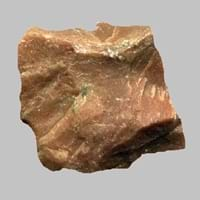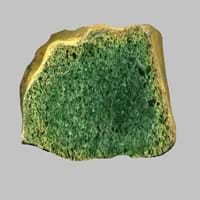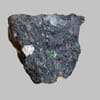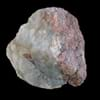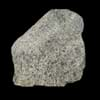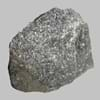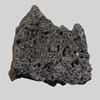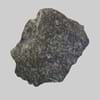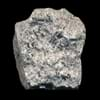Rhyolite and Jadeitite
Definition
Definition
Rhyolite is a fine-grained igneous rock which is rich in silica
Jadeitite is a metamorphic rock usually found in blueschist grade metamorphic terrains
History
Origin
North America
Unknown
Discoverer
Ferdinand von Richthofen
Unknown
Etymology
From German Rhyolit, from Greek rhuax lava stream + lithos stone
From pyroxene mineral jadeite
Class
Igneous Rocks
Metamorphic Rocks
Sub-Class
Durable Rock, Hard Rock
Durable Rock, Medium Hardness Rock
Family
Group
Volcanic
Not Applicable
Other Categories
Coarse Grained Rock, Opaque Rock
Fine Grained Rock, Opaque Rock
Texture
Texture
Aphanitic, Glassy, Porphyritic
Earthy
Color
Grey, White, Light Black
Black, Brown, Green, Grey, White
Maintenance
More
Less
Durability
Durable
Durable
Water Resistant
Yes
Yes
Scratch Resistant
Yes
No
Stain Resistant
Yes
No
Wind Resistant
Yes
No
Acid Resistant
Yes
No
Appearance
Banded
Rough and Dull
Uses
Architecture
Interior Uses
Decorative Aggregates, Homes, Hotels, Interior Decoration, Kitchens
Decorative Aggregates, Homes, Interior Decoration
Exterior Uses
As Building Stone, As Facing Stone, Paving Stone, Office Buildings
Garden Decoration, Office Buildings, Paving Stone
Other Architectural Uses
Not Available
Curbing
Industry
Construction Industry
Arrowheads, As Dimension Stone, Building houses or walls, Construction Aggregate, Cutting Tool, for Road Aggregate, Knives
As Dimension Stone, Cutting Tool, Knives
Medical Industry
Not Available
Not Available
Antiquity Uses
Artifacts
Artifacts, Jewellery, Monuments, Sculpture
Other Uses
Commercial Uses
Gemstone, Laboratory bench tops, Jewelry
Commemorative Tablets, Creating Artwork, Jewelry
Types
Types
Pumice Rocks, Obsidian Rocks, Perlite Rocks, Porphyritic Rocks.
Not Available
Features
Acidic in nature, Available in lots of colors
Host Rock for Lead
Archaeological Significance
Monuments
Not Yet Used
Used
Famous Monuments
Not Applicable
Not Available
Sculpture
Not Yet Used
Used
Famous Sculptures
Not Applicable
Not Available
Pictographs
Not Used
Used
Petroglyphs
Not Used
Used
Figurines
Not Yet Used
Used
Fossils
Absent
Absent
Formation
Formation
Rhyolite is a felsic extrusive rock and due to its high silica content, rhyolite lava is very viscous and is volcanic equivalent of granite.
Due to change in environmental conditions, rocks are heated and pressurized deep inside the Earth's surface. Jadeitite is formed from the extreme heat caused by magma or by the intense collisions and friction of tectonic plates.
Composition
Mineral Content
Biotite, Feldspar, Hornblade, Plagioclase, Pyroxene, Quartz
Carbonate, Magnetite, Pyrrhotite, Serpentine, Sulfides
Compound Content
Ca, Fe, Potassium Oxide, Mg, Potassium, Silicon Dioxide, Sodium
Ca, CaO, Carbon Dioxide, KCl, MgO, Sulfur Dioxide, Sulphur
Transformation
Metamorphism
Yes
Yes
Types of Metamorphism
Burial Metamorphism, Cataclastic Metamorphism, Regional Metamorphism
Cataclastic Metamorphism, Contact Metamorphism, Regional Metamorphism
Weathering
Yes
No
Types of Weathering
Biological Weathering, Chemical Weathering, Mechanical Weathering
Not Applicable
Erosion
Yes
Yes
Types of Erosion
Chemical Erosion, Sea Erosion, Water Erosion, Wind Erosion
Coastal Erosion, Water Erosion, Wind Erosion
Properties
Physical Properties
Hardness
6-7
3-5
Grain Size
Large and Coarse Grained
Very fine-grained
Fracture
Sub-conchoidal
Uneven
Streak
Not Available
White, Greenish White or Grey
Porosity
Highly Porous
Less Porous
Luster
Earthy
Waxy and Dull
Compressive Strength
140.00 N/mm2
15
310.00 N/mm2
2
Cleavage
Not Available
Not Available
Toughness
2
7
Specific Gravity
2.65-2.67
2.79-3
Transparency
Opaque
Opaque
Density
2.4-2.6 g/cm3
2.5-3 g/cm3
Thermal Properties
Specific Heat Capacity
Not Available
0.95 kJ/Kg K
9
Resistance
Heat Resistant, Wear Resistant
Heat Resistant, Water Resistant
Reserves
Deposits in Eastern Continents
Asia
China, India
India, Saudi Arabia, Singapore, South Korea
Africa
Angola, Egypt, Madagascar, Namibia, Nigeria, South Africa
Ethiopia, Western Africa
Europe
Germany, Iceland, Ireland, Italy, Spain
England, Georgia, Switzerland, United Kingdom
Others
Not Available
Not Available
Deposits in Western Continents
North America
Canada, USA
Canada
South America
Argentina, Bolivia, Chile, Colombia, Ecuador, Peru, Venezuela
Colombia
Deposits in Oceania Continent
Australia
New Zealand, Queensland, Western Australia
Central Australia, New South Wales, New Zealand, Western Australia
All about Rhyolite and Jadeitite Properties
Know all about Rhyolite and Jadeitite properties here. All properties of rocks are important as they define the type of rock and its application. Rhyolite belongs to Igneous Rocks while Jadeitite belongs to Metamorphic Rocks.Texture of Rhyolite is Aphanitic, Glassy, Porphyritic whereas that of Jadeitite is Earthy. Rhyolite appears Banded and Jadeitite appears Rough and Dull. The luster of Rhyolite is earthy while that of Jadeitite is waxy and dull. Rhyolite is available in grey, white, light black colors whereas Jadeitite is available in black, brown, green, grey, white colors. The commercial uses of Rhyolite are gemstone, laboratory bench tops, jewelry and that of Jadeitite are commemorative tablets, creating artwork, jewelry.
|
||
|
||
|
